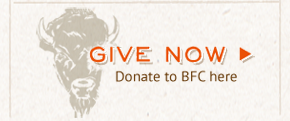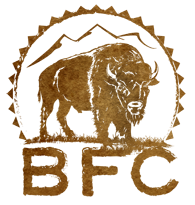Department of the Interior Seeks to Establish a Bison Shared Stewardship Strategy Project
When I was on tribal council and in meeting rooms hosted by federal agencies, one thing remained constant, it was their domain and they will tell everyone else what they cannot do. More importantly, the federal officials would tell us what they would not do even if they could. Afterwards, they often developed and offered grants and contracts co-opting terms and actions by grassroots tribal members, that effectively diminished their trust obligations to those tribes. To accept the federal funding was to accept the federal government’s will on those policy outcomes. An example is the Columbia Basin Accords and Columbia River Treaty Tribes. The federal government offered those tribes millions of fish recovery and water quality dollars, in exchange for a decade of silence on federal dam operations and their significant impact on salmon survivability. Well before the Columbia Basin Accords, tribes had to litigate to protect their treaty-reserved rights and cultural lifeways. In response, what did the federal government do to attempt to minimize treaty rights and lifeways? They muddied the water by bringing in other non-treaty tribes, effectively diluting their trust responsibility, while undermining the application of treaties as the Supreme Law of the Land. That’s the rub on bison policy in the Yellowstone Ecosystem. I get nervous when I see the federal government funding a tribal gathering, and front-loading a decision-making body with members of an organization it provides significant funds to. (You can read the letter from Sec. Haaland here: Invitation to the Bison Shared Stewardship Project, PDF) Treaty tribes are effectively diluted out with this model, and the federal trust obligation diminished.

Thus, the plight of Yellowstone Buffalo is far from over. All indications are that the federal government is ignoring our successful legal complaints regarding their failure to identify and manage for the distinct populations of wild buffalo in the Yellowstone Ecosystem. The Department of the Interior still refuse to meaningfully engage other federal agencies to protect buffalo outside of the park boundaries. Yellowstone National Park’s draft plan for buffalo reflects this fundamental flaw and you can comment on it through Monday, September 25 https://parkplanning.nps.gov/projectHome.cfm?projectID=94496. It’s not lost on those who’ve been monitoring the issue, that this same exact scheme is being applied to other important species in the Yellowstone and Northern Rockies, that is grizzlies and wolves. The Secretaries of Interior and Agriculture are failing us by their refusal to act in unity together. The silo’d approach by the federal government, in this case the National Park Service, is equally impactful to the long-term viability of distinct populations of buffalo in the Yellowstone Ecosystem. Again, this includes that of the grizzly bear, wolves, and impacting biodiversity. Yet, here we are watching the federal government move in a vacuum, trying to diminish their obligations as they go, and failing multiple species at once in the same ecosystem. They force participants in their process to only see in the tunnel, while so many others see the holistic needs of the regional wildlife and landscape.
Yellowstone National Park Bison Management Plan
Comments due Monday, September 25
I’ve led, at the policy-level, tribal restoration and recover efforts for endangered salmon and wolf populations. With that knowledge I understand how the federal government is diminishing the terms “co-stewardship”, “free-roaming”, and treaties as the supreme law of the land. Buffalo management in the Yellowstone must be managed by wildlife professionals, not rancher interests. The entire Yellowstone Ecosystem is their home. “Free-roaming” is not walking from one side of the park to the other and back again, while killing all those that keep walking outward. The Campaign has witnessed the travesty of those actions, and we know the harmful impacts all too well. “Co-stewardship” is not accepting the confines driven by a singular industry, rather it is the biological need of the distinct populations throughout their wild habitats, in the salmon world we call that Gravel to Gravel Management. Grizzlies and wolves are equally impacted by these failed federal conditions. As we face increasing extreme weather events, we cannot afford to continually accept anything less than species protection, climate resilience in the Yellowstone Ecosystem, and an improved infrastructure to protect transportation and municipal systems. The Campaign has been on the frontlines of these discussions, and we know it can be done. Accepting a planning process driven by a Department of the Interior structure that fails wildlife is unacceptable. The future of our unborn generations demand we speak for the buffalo and the broader ecosystem. We must delay any advancement in that process until it includes an alternative that manages buffalo as other wildlife in the ecosystem, namely elk.
"They force participants in their process to only see in the tunnel, while so many others see the holistic needs of the regional wildlife and landscape."
This is not a zero-sum game, but the federal government has orchestrated it to be so. Tribes must come together without federal influence and discuss their shared experiences as wildlife professionals, lead agencies in species restoration across broad landscapes, treaty rights protection, cultural practice in the Yellowstone Ecosystem, and those who are stewards of the land. The Yellowstone Buffalo and the species that rely on them, need our collective voices. Tribes are a powerful force that must be informed outside of the federal process. I have personally heard more treaty tribes state they want wild buffalo throughout the entire ecosystem. On that premise alone this is a failed process, doomed to embed the priorities that have brought the ailing Central Herd of Yellowstone Buffalo to its knees. It takes infrastructure and planning, but nothing that cannot be accomplished. Managing wildlife is providing for their habitats, not moving them away. If we are to continue to translocate Yellowstone buffalo, it must be done in a way that protects the long-term viability and the wild characteristics of those buffalo that remain in the ecosystem, especially that of the Central Herd. Existing and emerging processes fail on that point as well. Adaptative management without biologically-adopted population thresholds and expansive habitat fails all wildlife, not just buffalo. We must do better, and tribes have an opportunity to grow the discussion back to where it must be.
For these important reasons, the Buffalo Field Campaign is hosting our own Tribal Buffalo Summit. We’ve been on the frontlines of this issue for decades. We’ve stayed in the field and witnessed the herds as they struggled with the impacts of slaughter, forced removal, hazing, and the inhibition of their natural migrations. We understand the impacts existing priorities inflict upon wild buffalo. We will give this knowledge to tribes and support their advocacy for a renewed discussion of multiple species benefits across the entire ecosystem, centered on buffalo as the Keystone Species.
This is not a zero-sum game. We can grow the distinct populations, founded in science, while ensuring other initiatives are supported. We must honor our relationship to Yellowstone buffalo populations and protect them appropriately. Wild buffalo must first be respected as an important being within their existing home, and secondly, as the wellspring population for the growth of herds elsewhere.
Together, we can make these conditions a reality. Qeciyewyew for walking this path with us. You are the wind at our backs during these uncertain times.
For the Buffalo,
James L. Holt, Sr.
Executive Director
Buffalo Field Campaign
“The Earth and I are of One Mind.”- Chief Joseph, Nimiipuu (Nez Perce)







